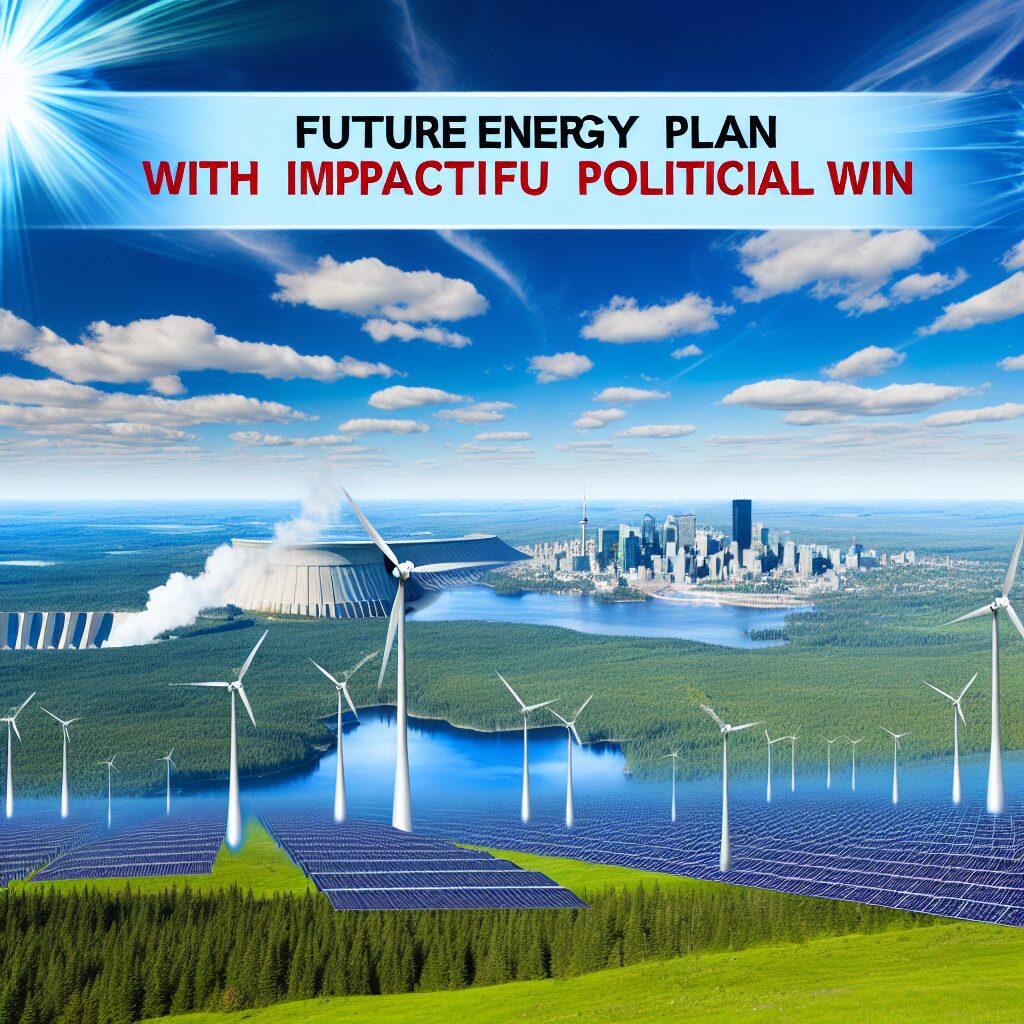Canada’s Future Energy Plan under Carney’s Potential Election Win
As speculation builds around Mark Carney’s possible entry into Canadian politics, many are turning their attention to what a future government led by the former Bank of Canada governor could mean for the country’s energy strategy. Carney, known globally for his work on climate finance and sustainable economics, has hinted at a significant shift in how Canada might approach energy development and its transition toward a low-carbon economy.
A Focus on Clean Energy Transition
If elected, Carney is expected to prioritize clean energy innovations and infrastructure modernization as part of Canada’s broader climate commitments. His advocacy for sustainable finance and decarbonization suggests a policy direction that places renewable energy at the core of national growth.
- Increased investments in wind, solar, and hydroelectric energy sources.
- Phasing out reliance on coal and other high-emission fossil fuels.
- Support for electrification of public transport and industrial sectors.
Carney has also voiced support for building a “clean electricity grid” that would connect provinces and allow more efficient distribution of renewable power across Canada.
Carbon Pricing and Green Finance
A cornerstone of Carney’s potential energy platform is expected to be enhanced carbon pricing mechanisms. He has long advocated for economic tools that hold polluters accountable while creating incentives for green innovation.
- Strengthening the carbon tax framework to reflect true environmental costs.
- Encouraging private investment in clean technologies through clear regulatory signals.
- Aligning federal financial policies with emissions reduction targets.
These measures align with Carney’s role as UN Special Envoy on Climate Action and Finance, where he promoted frameworks that integrate sustainability into global financial systems.
Balancing Economy and Environment
While emphasizing clean energy, Carney is also likely to address concerns about economic disruption. His approach seems to favor a gradual, managed transition away from oil and gas, especially in regions heavily dependent on those industries.
- Developing regional transition plans to support affected workers and communities.
- Creating incentives for oil and gas companies to reduce emissions and invest in cleaner alternatives.
- Promoting retraining programs and job creation in renewable energy sectors.
Carney’s background in both central banking and international climate policy may help him navigate these complex trade-offs.
Technology and Innovation as Key Drivers
Innovation will likely play a key role in Carney’s energy strategy. By fostering research and development in battery storage, hydrogen fuel, and carbon capture technologies, Canada could position itself as a leader in clean energy exports.
- Funding pilot projects in carbon-neutral technologies.
- Collaborating with universities and startups focused on sustainable solutions.
- Supporting commercialization pathways for clean tech innovations.
This focus supports Canada’s potential to not only meet domestic energy needs but also become an exporter of clean technology and expertise.
Federal-Provincial Cooperation Essential
Achieving ambitious energy goals would require coordination between federal and provincial governments. Carney has highlighted the importance of collaborative governance when it comes to issues like interregional electricity grids or harmonized carbon pricing.
- Engaging provinces with diverse energy profiles to develop unified strategies.
- Facilitating resource sharing and infrastructure development across borders.
- Negotiating common standards for emissions reporting and accountability.
Such cooperation could streamline initiatives and avoid fragmented energy policies that hinder progress.
Challenges Ahead
Despite a clear vision for a low-carbon economy, Carney may face resistance from sectors wary of rapid change. Balancing environmental objectives with existing economic structures will remain a critical challenge.
Some political observers point out that without legislative backing and stakeholder alignment, even well-intentioned policies can falter. Still, Carney’s potential leadership could bring renewed momentum to Canada’s climate agenda.
With mounting global pressure to act on climate change and diversify energy sources, Carney’s potential candidacy puts energy reform at the center of Canada’s political conversation.
Analyzed and outlined by ChatGPT-4o, images by DALL·E 3.
Source
https://ca.news.yahoo.com/carney-says-wins-election-canada-165344813.html

